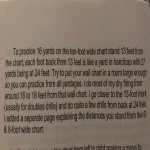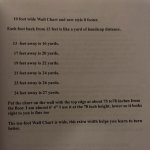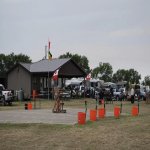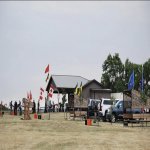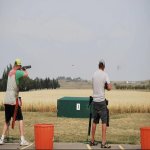May I ask, what is a drill?
My night did not go well but was the easiest 18-19's I have shot. Lazy kind of day just watching the clays rather than focusing and following through. When I did it was almost automatic, as the spank said, inkballed. Was trying full choke, a higher starting hold point, and new glasses. Will try again today.
Drills...developing a practice routine.
I believe Terry lays out some practice drills in the manual?
For singles and caps I start at the target farthest left, do 5, then go to the next target to the right. I do not shoot the lowest targets left and right as they are the first targets for doubles practice. I do that until I have gone through to the farthest right. Take a few minutes break then do another set this time right to left. By the time I'm to the far left that is 110 shots. Then I go back and shoot random lefts and rights until I have shot 50 in two 25 rounds.
If I notice a particular target/station is giving me grief I will shoot 25-50 of them. Having your scores on a score sheet at practice on your range and keeping them for reference can help point out particular stations or angles of trouble.
For whatever reason hard rights from 4&5 were my nemesis from day 1. They always were the targets that gave me the most grief so at one time when I'd shoot I'd start on station 4 if it was open. By doing that once I shot and hopefully ran those 10 targets on those two stations it would give me a sense of relief taking the pressure off and boost my confidence substantially until the next round. The chart has helped me eliminate that and redirected my focus needed to get those "bad" stations out of my thoughts. Now I can start anywhere and be as relaxed on those two stations as the other 3.
And again for whatever reason hard lefts on station 1 came extremely naturally to me and I usually pulverized them. I used to always try to get station 4 as a starting post but now I prefer station 2 so I can end on 1 to really boost my confidence going into the next round of 25. So on the chart I spend my final drills shooting stations 4-5 and finish up on station 1 shooting random lefts and rights.
I also practice for shoot-offs should I get lucky(unfortunate enough lol) to be in one by shooting all 5 stations doing random lefts and rights, rights and lefts to the two outermost targets as in shoot-offs the angles are sometimes widened to try to bring a quicker conclusion to the shoot to determine a winner.
For doubles practice on the chart I shoot it as I would at the range. Straightest angle first, widest angle second. 5 pairs from each station. Station 3 I shoot right hand bird first as being a righty I prefer to swing the gun into myself for the second shot. That keeps me from running out of swing should I be slow to the second target and keeps my cheek welded to the stock.
Hope this helps a bit? I am no "expert" by any stretch but I know what works for me and you will find out too what works for you and maybe some of what I have posted here you can glean maybe a part of something that will help you.
















































